Accepted Scientific Name: Stapelia divaricata Masson
Stapel. Nov. 17. t. 22. 1797 [Nov-Dec 1797] Masson

Gonostemon divaricatus (Stapelia divaricata) Photo by: Julio C. García
Origin and Habitat: Buffeljachte, Swellendam, Cape Province
Synonyms:
See all synonyms of Stapelia divaricata
back
Accepted name in llifle Database:Stapelia divaricata MassonStapel. Nov. 17. t. 22. 1797 [Nov-Dec 1797]Synonymy: 8
back
Description: A small stapeliad (6-12 cm tall) whit green grey and reddish angular stems (pencil sized diameter 0,5-1cm) branching and forming tillers from the base, the epidermis is somewhat velvety.
Flower: The flowers are star-shaped waxy, solidly cream/white to pink within, tipped with green, glabrous and shining; the corolla outside is greenish-brown of about 4 cm and have a "fleshy" look. Not a prolific bloomer.
Blooming phenology: small basal group of flowers in the latter-end of the summer,
Bibliography: Major references and further lectures:
1) Focke Albers, Ulrich Meve “Illustrated Handbook of Succulent Plants: Asclepiadaceae: Asclepiadaceae” Volume 4 Springer, 2002
2) Gideon Smith, Neil R. Crouch “Guide to Succulents of Southern Africa” Struik Nature, 01/nov/2009
3) Focke Albers, Ulrich Meve “Illustrated Handbook of Succulent Plants: Asclepiadaceae: Asclepiadaceae” Volume 4 Springer, 2002
4) Doreen Court “Succulent Flora of Southern Africa” CRC Press, 01/giu/2000
5) Clive Innes “Complete Handbook of Cacti and Succulents” Van Nostrand Reinhold Company, 01/dic/1981
6) A.C.White & B.Sloane “Stapelieae” ( White & Sloane) ed. 2 3: 855 Abbey San Encino Press, 1937
7) Luckhoff “The Stapelieae of Southern Africa” Capetown, A.A. Balkema 1952
8) Bruyns, P.V. 2005. “Stapeliads of southern Africa and Madagascar.” Vol. II. Umdaus Press, Hatfield.
9) James Cullen, Sabina G. Knees, H. Suzanne Cubey “The European Garden Flora Flowering Plants: A Manual for the Identification of Plants Cultivated in Europe, Both Out-of-Doors and Under Glass” Cambridge University Press, 11/ago/2011
More...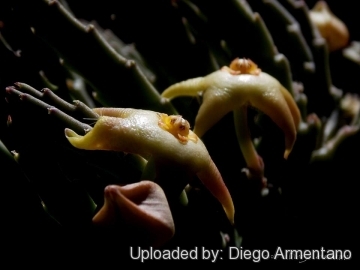 Gonostemon divaricatus (Stapelia divaricata) Photo by: Diego Armentano
Gonostemon divaricatus (Stapelia divaricata) Photo by: Diego Armentano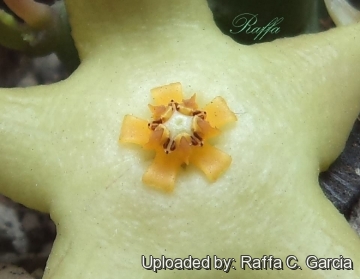 Gonostemon divaricatus (Stapelia divaricata) Photo by: Raffa C. Garcia
Gonostemon divaricatus (Stapelia divaricata) Photo by: Raffa C. Garcia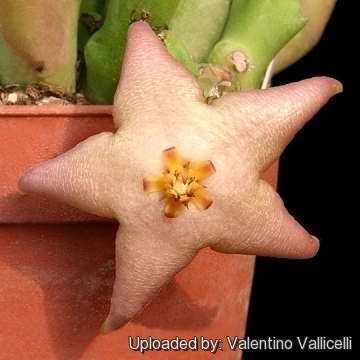 Gonostemon divaricatus (Stapelia divaricata) Photo by: Valentino Vallicelli
Gonostemon divaricatus (Stapelia divaricata) Photo by: Valentino Vallicelli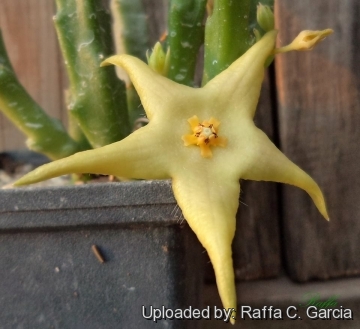 Gonostemon divaricatus (Stapelia divaricata) Photo by: Raffa C. Garcia
Gonostemon divaricatus (Stapelia divaricata) Photo by: Raffa C. Garcia Gonostemon divaricatus (Stapelia divaricata) Photo by: Cactus Art
Gonostemon divaricatus (Stapelia divaricata) Photo by: Cactus Art Gonostemon divaricatus (Stapelia divaricata) Photo by: Julio C. García
Gonostemon divaricatus (Stapelia divaricata) Photo by: Julio C. García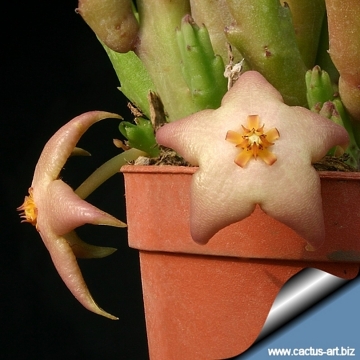 Gonostemon divaricatus (Stapelia divaricata) Photo by: Cactus Art
Gonostemon divaricatus (Stapelia divaricata) Photo by: Cactus Art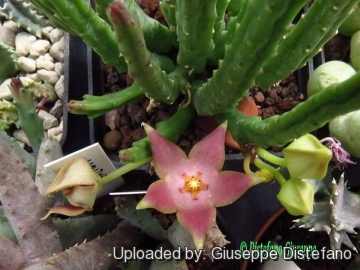 Gonostemon divaricatus (Stapelia divaricata) Photo by: Giuseppe Distefano
Gonostemon divaricatus (Stapelia divaricata) Photo by: Giuseppe DistefanoCultivation and Propagation: Stapelia divaricataSN|19229]]SN|19229]] is an easy obliging blooming plant when mature, that it is happy in any average succulent house.
Potting:Since roots are quite shallow, use a soft and incoherent cactus mix or add extra perlite or pumice to regular soil potting soil, and clay pots help the plants to dry out between watering.
Waterings: It require moderately watering through the growing season but enjoy plenty of water and some fertiliser in hot weather, this helps them to flower freely. Water more sparingly in winter according to temperatures. But, as with most asclepiads, it is unwise to leave them wet in cold weather.
Fertilization: Fertilizers for succulent plants must be rich in potassium, but poor in nitrogen, to avoid the plants from developing excess vegetation, which is easily attacked by fungal diseases.
Sun Exposure: As with many succulents, they prefer to grow in the light shade of scrubby shrubs or between rocks where they get some shade during the day. In summer it is advisable to position this plant in a partially shady place, where it is exposed to direct sunlight only during the coolest hours of the day.
Hardiness: These plants don't like cold weather, therefore in the Spring it is best to set them outside only when the temperatures are above 15°C. Can endure temperatures below 5°C for short period, but only if the soil stays completely dry.
Pest and diseases: Stapelia species vary in their susceptibility to rotting, but are generally fairly easy to grow, especially if kept pest-free. They are very susceptible to stem and root mealy bugs, and damage from these may well initiate fungal attack. If you do have problems with a stem or with basal rotting, you can reliably isolate the healthy parts, dry them off, and re-root them in moist compost.
Cultural Practices: Re-pot every 2 years.
Propagation: Easiest with stem cuttings. Allow cuttings to dry a day before planting. Stems must be laid (Not buried) on gritty compost and will then root from the underside of the stems. It can also be increased from seeds sowing in spring in moist, sandy peat moss. Barely cover seeds. Seeds germinate quickly.
More...
Your Photos
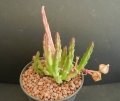
by Giuseppe Distefano



















